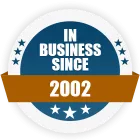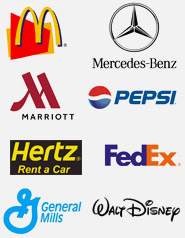How to Clean Kitchen Exhaust Hood and Duct
How to Clean Kitchen Exhaust Hood and Duct?
Regular and effective cleaning and maintenance of the kitchen hood and duct in your restaurant or commercial kitchen remains one of the primary defenses against fire hazards. Kitchen hoods and ducts get covered with soot, grime, dirt, and grease pretty quickly. It is important to ensure that these exhaust systems are clean, free of clogs and grease to eliminate potential damage from fire accidents. Cleaning of hoods and ducts poses tough challenges to staff in charge of kitchen maintenance. Pressure washing is the perfect solution to keep hoods and ducts in peak performing state.
Why Pressure Washers are Heavily Recommended for the Process?
Pressure washers emit water with high force and hence have the capability to dislodge and remove all types of dirt, muck, grease, oil deposits, and grime from hoods and ducts in a commercial kitchen. Exhaust gases often leave a thick layer of residue inside the ductwork of hoods. Pressure washing works best because it can clean surface grease as well as other stubborn deposits more comprehensively. Moreover, the high pressure jet of hot water from heated pressure washers can reach and clean even the inaccessible areas of the duct and hood.
Cleaning Kitchen Hood and Duct with Pressure Washer
Cleaning of kitchen hood and duct requires a systematic approach. The following steps must be taken to get the best out of your duct and hood cleaning effort:
- Understanding the Working of a Pressure Washer: A pressure washer consists of basically three parts; the pump, the water source, and a high pressure nozzle through which operators can direct the highly pressurized water on to the hood and duct surfaces. Water is compacted in a closed container and pressure is applied using a powerful motor. Water is released through a small opening on the nozzle. The pressure at which water escapes through this opening is inversely proportional to the size of the opening. Reading the operation manual will help you understand how to use the pressure washer for cleaning hoods and ducts.
- Setting Up the Machine: Pressure washers are extremely powerful and need to be set up correctly to get the best cleaning results and also to avoid accidents. Apart from checking all the connections, care should be taken to use the right fuel for the pump. Flush the air from the inlet pipe before starting to prevent damage to valves and drop in pressure.
- Using Industry-Specific Pressure Washers: It is a smart move to invest in a pressure washer, designed for cleaning hood, duct, and other restaurant equipment. Machines that support hot water temperature, steam temperature, and high pressure levels can easily remove grease, oil, and fats without much manual effort.
- The Cleaning Process: Remove grease and residues from the interior surfaces of the hood, filters, ductwork, and exhaust fans to ensure compliance with all applicable municipal, state, and National Fire Protection Association codes. Use the heated pressure washer from the top and work toward the inner areas of the hood for best results. Remove all louvers, blades, and other removable parts for easy access, so that cleaning can be more complete and faster. Mark all parts before removal, and then clean, wipe dry, and ensure they are restored to their original positions.
Tips:
- Choose the right pressure and temperature levels to remove tough and stubborn grease, soot, and oil deposits.
- Let experienced operators handle the machine to prevent potential mishaps.
- Choose pressure washers of proven and top brands to get the desired results and the best value for your money.
Using the right cleaning machines and accessories to keep your hood, duct, and exhaust system cleaned regularly is necessary, not only for the safety of your customer, employees, and your building but also to remain compliant with the regulatory demands of the industry.


